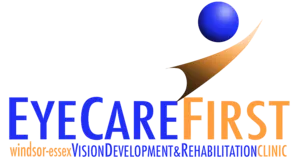
Does Genetics Play a Role in My Child's Vision?
Does your child suffer from nearsightedness just like you? He or she may have inherited the common refractive error. Nearsightedness isn't the only vision condition that has a genetic component. In fact, many eye conditions may be influenced, at least in part, by your genes.
Eye Conditions That Can Be Inherited
Do you or your family members have any of these conditions?
- Hyperopia or Myopia. Your children may be more likely to be hyperopic (farsighted) or myopic (nearsighted) if you are farsighted or nearsighted. Although inheritance may play a role in these refractive errors, other factors may also influence whether your child needs glasses. Researchers who conducted the Sydney Myopia Study discovered that children who spent more time outdoors weren't as likely to develop nearsightedness.
- Glaucoma. Glaucoma occurs when the pressure inside the eye becomes dangerously high. High pressure can damage the optic nerve, resulting in permanent vision loss. According to the Glaucoma Research Foundation, primary open-angle glaucoma, the most common form of the disease, can be inherited. Congenital glaucoma, a form that's present at birth or develops in early childhood, is also inherited.
- Cataracts. Although congenital cataracts can be caused by infections, trauma or metabolic issues, the condition may be inherited in some cases. Cataracts occur when the clear lens in the middle of the eye clouds, causing blurry vision. Cataracts may be present at birth or might develop soon after.
- Strabismus and Amblyopia. If you had strabismus as a child, your children may be more likely to develop the condition. Strabismus, also known as crossed eyes, occurs when the muscles that control the eyes are weak and don't work together as a team. As a result, the eyes can appear crossed or one eye can point upward or downward. If your child isn't treated for strabismus, he or she may eventually develop amblyopia. Also called lazy eye, amblyopia causes the brain to ignore light impulses sent from one eye, effectively turning off or reducing vision in that eye.
- Color Blindness. Your child may be unable to recognize certain colors if he or she inherited a defect in a gene responsible for producing photopigments in the cone-shaped photoreceptor cells in the retina. Red-green color blindness is more common in males and affects your child's ability to identify certain colors. Depending on the form of red-green color blindness, your child might see red as black or might see green or orange colors as yellow. It's also possible to inherit blue-yellow color blindness, although the condition is rarer than red-green color blindness.
- Retinitis Pigmentosa and Other Rare Diseases: Your child may be at increased risk of developing certain rare eye diseases or disorders if you or the child's other parent have the disease or are a carrier. Retinitis pigmentosa occurs when photoreceptor cells in the retina degenerate, causing vision loss. First symptoms often include loss of peripheral vision and night blindness. Other eye diseases that can be inherited include Usher syndrome, Stargardt disease, choroideremia, juvenile macular degeneration, keratoconus, Leber Congenital Amaurosis and Kearns-Sayre syndrome.
How are Eye Diseases and Conditions Passed on to My Child?
Eye diseases and conditions are transmitted in one of three ways:
- Dominant Inheritance. A parent who has the disease or condition passes the mutated gene to the child.
- Recessive Inheritance. Neither parent has the disease or condition, but are carriers. If the child only receives a single copy of the mutated gene from one parent, he or she will also be a carrier. If the child receives mutated genes from both parents, he or she will have the disease.
- X-Linked Inheritance: Mothers pass the disease to their sons via the X chromosome. The mothers themselves aren't usually affected, but may occasionally have a mild form of the disease.
Vision therapy can be very helpful if your child has been diagnosed with an inherited eye condition or disease. Therapy improves the brain/eye connection and also helps strengthen the muscles needed for good vision. The therapy uses games, activities, filters, prisms and other methods to improve and enhance your child's vision.
Would you like to find out if vision therapy could help your son or daughter? Call us to schedule a comprehensive vision examination.
Sources:
PubMed: Ophthalmology: Risk Factors for Incident Myopia in Australian Schoolchildren, 10/13
https://www.ncbi.nlm.nih.gov/pubmed/23672971
Glaucoma Research Foundation: Are You at Risk for Glaucoma?, 10/29/17
https://www.glaucoma.org/glaucoma/are-you-at-risk-for-glaucoma.php
Longevity: Eye Issues: Hereditary or Is Your Environment to Blame, 3/26/18
http://www.longevitylive.com/anti-aging-beauty/eye-issues-hereditary/
All About Vision: Myopia Causes – Is Your Child at Risk?
https://www.allaboutvision.com/parents/myopia-causes.htm
Foundation Fighting Blindness: Genetics 101: How Some Retinal Diseases are Inherited, 10/10/14
http://www.blindness.org/blog/index.php/genetics-101-how-some-retinal-diseases-are-inherited/
National Eye Institute: Facts About Color Blindness, 2/15


